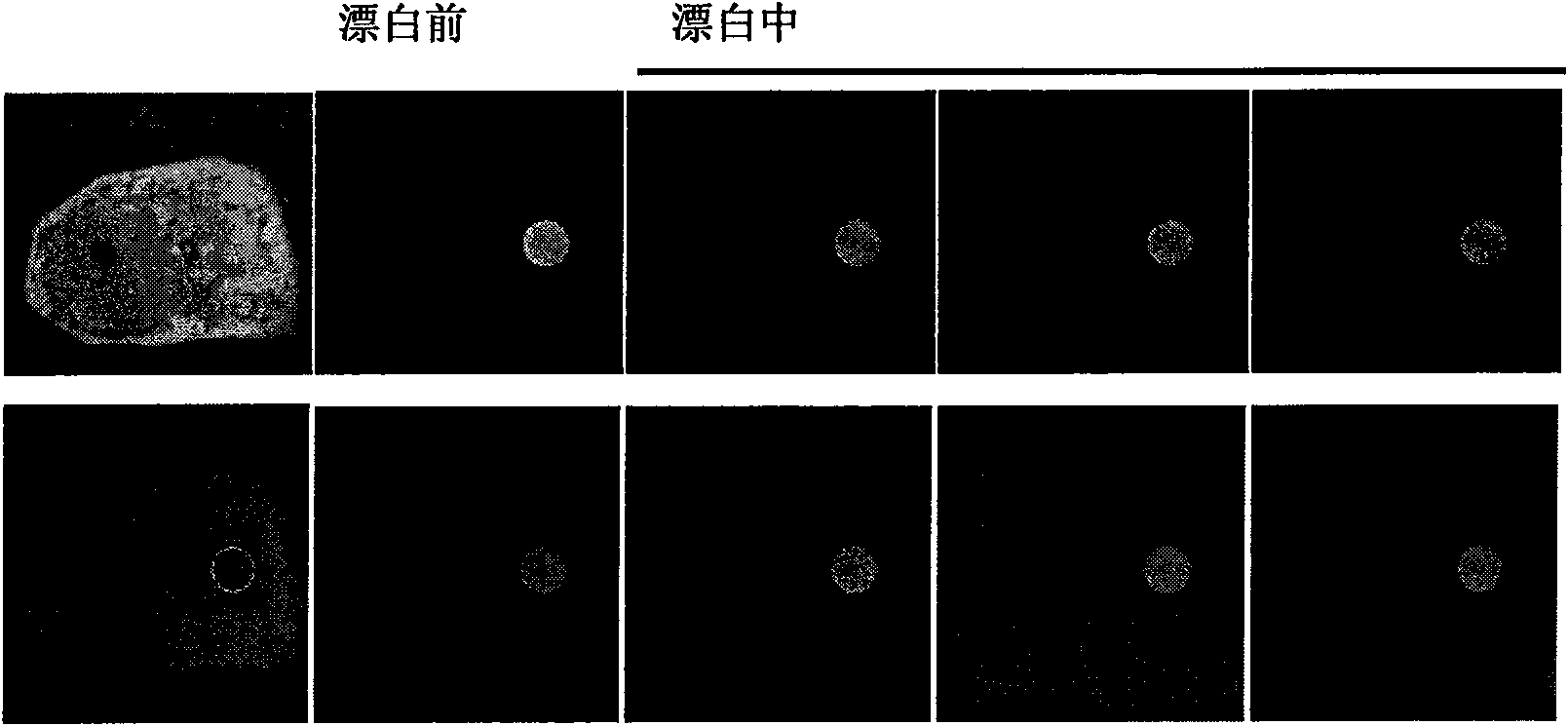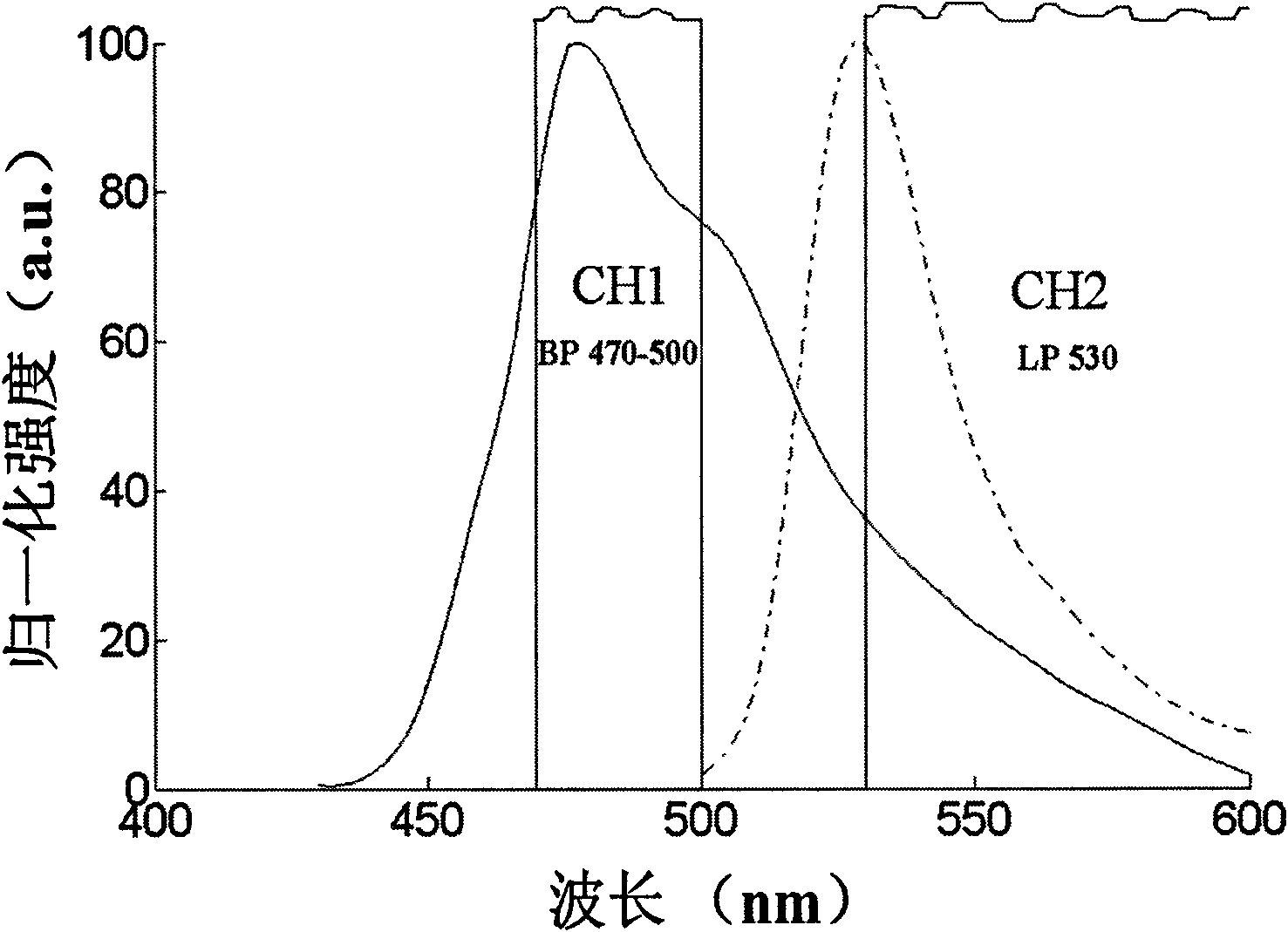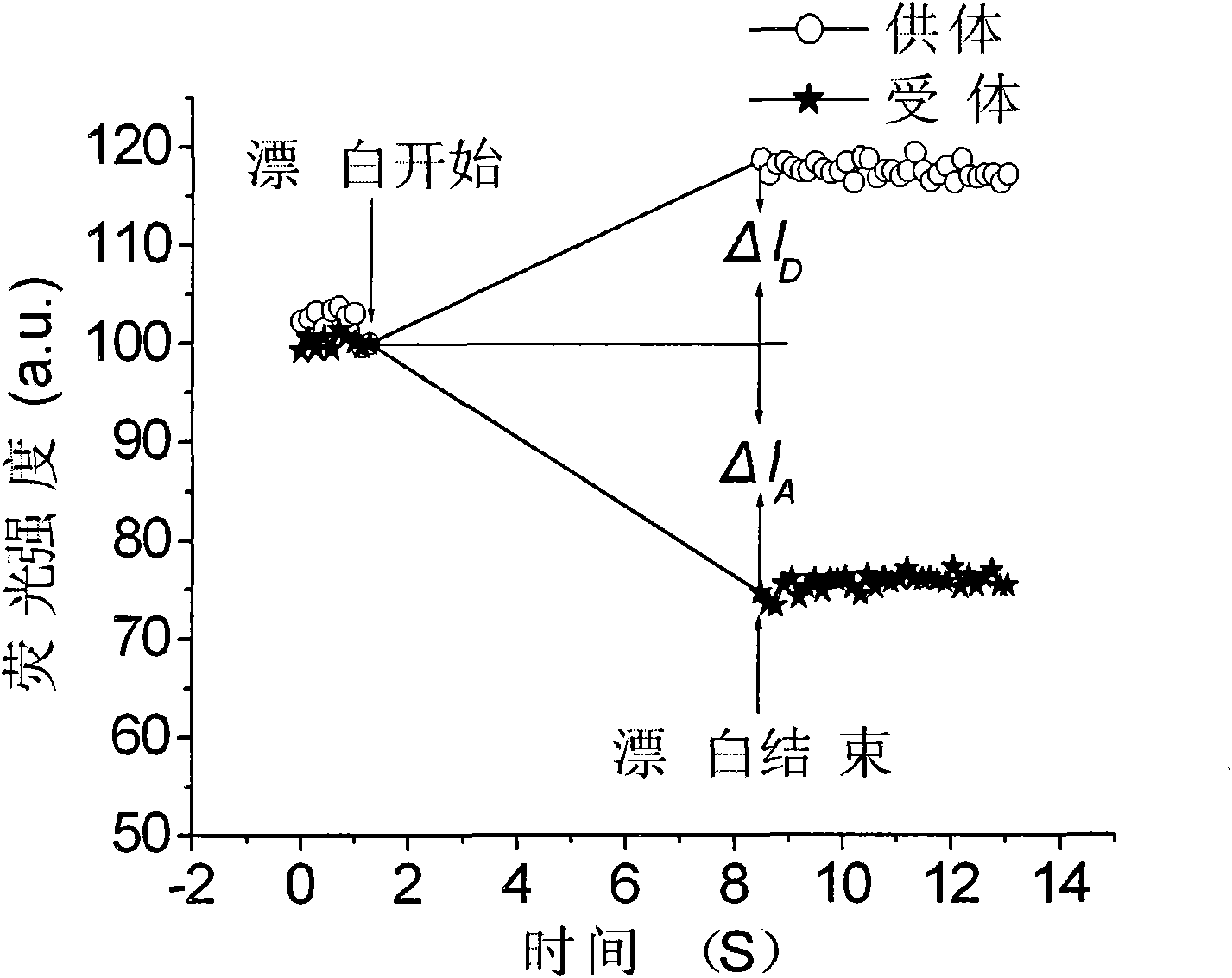Photobleaching-based method for quantitatively measuring fluorescence resonance energy efficiency
A technique for quantitative measurement of fluorescence resonance energy, applied in measuring devices, fluorescence/phosphorescence, instruments, etc., can solve the problems of difficult separation of donors and acceptors, difficult quantitative analysis of fluorescence resonance energy transfer efficiency, complexity, etc.
- Summary
- Abstract
- Description
- Claims
- Application Information
AI Technical Summary
Problems solved by technology
Method used
Image
Examples
Embodiment Construction
[0049] The present invention will be further described below in conjunction with the accompanying drawings and examples, but the embodiments of the present invention are not limited thereto.
[0050] 1. Plasmid source: Plasmid SCAT3 was purchased from the Shanghai office of Merck, Germany.
[0051] 2. Laser confocal scanning fluorescence microscope (LSM510, Zeiss, Germany)
[0052] LSM510 is configured with three lasers, among which the argon ion laser produces laser light with wavelengths of 458, 477, 488, and 514nm, and two helium-neon lasers produce laser light of 543nm and 633nm respectively. It is equipped with objective lenses with magnifications of 10×, 20×, 63× and 100×, and a scanning module. A micro CO 2 Incubator, always keep the same environment throughout the measurement: 37 °C constant temperature, 5% CO 2 .
[0053] 3. Cell culture
[0054] Human lung adenocarcinoma cells (ASTC-a-1) were grown in DMEM medium containing 10% newborn bovine serum, 50units / ml p...
PUM
 Login to View More
Login to View More Abstract
Description
Claims
Application Information
 Login to View More
Login to View More - R&D
- Intellectual Property
- Life Sciences
- Materials
- Tech Scout
- Unparalleled Data Quality
- Higher Quality Content
- 60% Fewer Hallucinations
Browse by: Latest US Patents, China's latest patents, Technical Efficacy Thesaurus, Application Domain, Technology Topic, Popular Technical Reports.
© 2025 PatSnap. All rights reserved.Legal|Privacy policy|Modern Slavery Act Transparency Statement|Sitemap|About US| Contact US: help@patsnap.com



